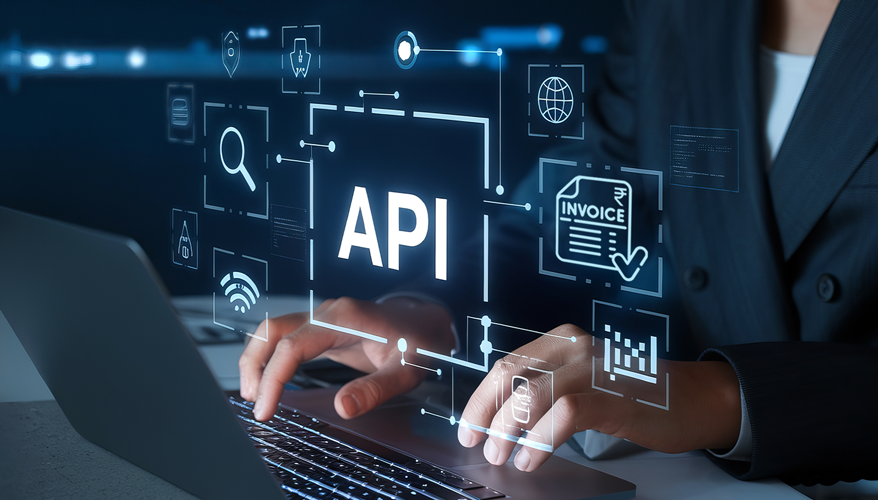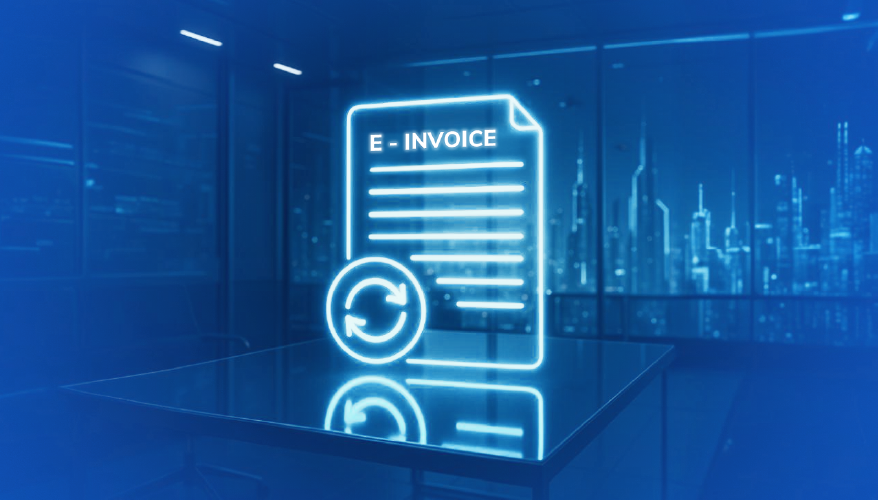
Continuous Transaction Control (CTC) Model in Malaysia’s E-Invoicing: A Step-by-Step Guide for Businesses
September 25, 2024
Rejection & Cancellation of e-Invoice in Malaysia: Reasons, Process, How to Avoid
December 17, 2024How to generate Malaysia e-Invoice through API model?

Malaysia has made significant strides towards digitizing its invoicing system to enhance efficiency and compliance in tax reporting. One of the key developments is the implementation of the Malaysia E Invoice initiative, which aims to streamline the invoicing process for businesses of all sizes.
To expedite this shift, the Inland Revenue Board of Malaysia (IRBM) has introduced two innovative e-Invoice delivery methods: the MyInvois Portal and Application Programming Interface (API).
The MyInvois portal, managed by the IRBM, allows all taxpayers to generate e-Invoices individually or in bulk using spreadsheet uploads. It’s perfect for businesses that need to submit e-Invoices but don’t have the resources/knowledge to integrate APIs or handle low annual transaction volumes.
The API Model is designed for businesses with high annual transaction volumes, enabling efficient e-Invoice transmission. There are three integration methods under this model:
By integrating APIs into their systems, businesses can automate the e-invoicing process, reducing manual errors and improving accuracy. This is particularly beneficial for businesses with high transaction volumes.
The process of generating an e-Invoice in Malaysia through the API model involves several key steps, ensuring that the invoices are validated and processed efficiently.
Step 1: Submission
WRT any business transaction, the supplier or service provider creates an e-Invoice in either XML or JSON (CSV supported through IRIS MyeInvois) format. This e-Invoice is then submitted to the Inland Revenue Board of Malaysia (IRBM) via API for validation.
Step 2: e-Invoice Validation
After submission, the MyInvois system validates the e-Invoice. Upon successful validation, the supplier or service provider receives a validated e-Invoice containing essential information such as the IRBM Unique Identifier Number, validation date and time, QR Code, and a validation link through the API. If errors are detected during this process, an error message is returned, prompting the necessary corrections before resubmission.
Step 3: Notification
The API model allows taxpayers to receive near-real time notifications from IRBM directly or through their service technology provider. These notifications include e-Invoice clearance status or any rejection requests from the buyer, facilitating efficient communication and timely actions.
Step 4: Sharing of e-Invoice
Once the e-Invoice is validated, the supplier or service provider can also embed a QR code linked to the validated e-Invoice on the document. This QR code allows the buyer to validate the invoice through the MyInvois portal, enhancing the transparency of the transaction.
Step 5: Rejection and Cancellation
Buyers and suppliers have the option to request the rejection or cancellation of an e-Invoice within a specified time frame (72 hours).
Step 6: Storing e-Invoices
All e-Invoices submitted through the API are securely stored in IRBM’s database. Taxpayers are advised to retain relevant records (from 18 months to 7 years archival availble on IRIS MyeInvois) for their accounting and auditing purposes.
Step 7: Reporting and Dashboard Services for Taxpayers
The API integration also enables suppliers and buyers to request and retrieve e-Invoices in various formats, significantly enhancing transparency and efficiency in e-Invoice management.
To expedite this shift, the Inland Revenue Board of Malaysia (IRBM) has introduced two innovative e-Invoice delivery methods: the MyInvois Portal and Application Programming Interface (API).
The MyInvois portal, managed by the IRBM, allows all taxpayers to generate e-Invoices individually or in bulk using spreadsheet uploads. It’s perfect for businesses that need to submit e-Invoices but don’t have the resources/knowledge to integrate APIs or handle low annual transaction volumes.
The API Model is designed for businesses with high annual transaction volumes, enabling efficient e-Invoice transmission. There are three integration methods under this model:
- Direct integration of a taxpayer’s ERP system with the MyInvois system
- Integration through PEPPOL service providers
- Integration through PEPPOL-ready solution providers
How to generate Malaysia e-Invoice through API model?
An Application Programming Interface (API) serves as a bridge between different software applications, enabling them to communicate and exchange data. In the context of e-invoicing, APIs provide a convenient and efficient way for businesses to submit e-Invoices to the IRBM and receive validation responses.By integrating APIs into their systems, businesses can automate the e-invoicing process, reducing manual errors and improving accuracy. This is particularly beneficial for businesses with high transaction volumes.
The process of generating an e-Invoice in Malaysia through the API model involves several key steps, ensuring that the invoices are validated and processed efficiently.
Step 1: Submission
WRT any business transaction, the supplier or service provider creates an e-Invoice in either XML or JSON (CSV supported through IRIS MyeInvois) format. This e-Invoice is then submitted to the Inland Revenue Board of Malaysia (IRBM) via API for validation.
Step 2: e-Invoice Validation
After submission, the MyInvois system validates the e-Invoice. Upon successful validation, the supplier or service provider receives a validated e-Invoice containing essential information such as the IRBM Unique Identifier Number, validation date and time, QR Code, and a validation link through the API. If errors are detected during this process, an error message is returned, prompting the necessary corrections before resubmission.
Step 3: Notification
The API model allows taxpayers to receive near-real time notifications from IRBM directly or through their service technology provider. These notifications include e-Invoice clearance status or any rejection requests from the buyer, facilitating efficient communication and timely actions.
Step 4: Sharing of e-Invoice
Once the e-Invoice is validated, the supplier or service provider can also embed a QR code linked to the validated e-Invoice on the document. This QR code allows the buyer to validate the invoice through the MyInvois portal, enhancing the transparency of the transaction.
Step 5: Rejection and Cancellation
Buyers and suppliers have the option to request the rejection or cancellation of an e-Invoice within a specified time frame (72 hours).
Step 6: Storing e-Invoices
All e-Invoices submitted through the API are securely stored in IRBM’s database. Taxpayers are advised to retain relevant records (from 18 months to 7 years archival availble on IRIS MyeInvois) for their accounting and auditing purposes.
Step 7: Reporting and Dashboard Services for Taxpayers
The API integration also enables suppliers and buyers to request and retrieve e-Invoices in various formats, significantly enhancing transparency and efficiency in e-Invoice management.
Benefits of the e-Invoice Model for Businesses
The adoption of the Malaysia E-Invoice model offers numerous benefits for businesses, including:- Streamlined Processes: The e-Invoice model simplifies the generation, submission, and management of invoices, minimizing manual effort and reducing the risk of errors.
- Cost Savings: By transitioning to e-Invoicing, businesses can save on costs related to paper, printing, and postage associated with traditional invoicing methods.
- Near-real time Validation: E-Invoices are validated in near real-time, ensuring accuracy and decreasing the likelihood of disputes.
- Improved Traceability: Each e-Invoice is assigned a unique identifier, allowing for straightforward traceability and mitigating the risk of tampering.
- Efficient Communication: The system facilitates swift communication between suppliers and buyers, reducing delays and improving business relationships.
- Enhanced Transparency: Both parties have access to detailed information regarding invoices, fostering transparency in financial transactions.
Challenges of the e-Invoice Model
Despite its advantages, the e Invoice model does present some challenges for businesses, such as:- Upfront Investment: Implementing API integration requires an initial investment in technology and potential modifications to existing ERP systems.
- Technical Expertise: Businesses may need to hire or develop in-house technical expertise to effectively manage the e-Invoice system.
- Change Management: Transitioning to an e-Invoicing system can necessitate changes in business processes and staff training, which may be disruptive initially.
How IRIS MyeInvois can help you with E-Invoicing?
IRIS MyeInvois is your all-in-one e-Invoice management solution, designed to seamlessly integrate with your existing ERP or billing systems. No major changes required—just simplified, automated e-Invoicing.Key Features to Power Your Business:
- Easily connects with any ERP or billing system via APIs or SFTP to create, manage, and submit e-Invoices effortlessly.
- Upload multiple invoices in CSV or JSON formats. Use the built-in transformation tool to convert data to LHDN-approved formats, validate information, and fill in missing values.
- Manual e-Invoices Raise e-Invoices manually on the platform when needed, bypassing throttling and submission limitations of the LHDN portal.
- Manage multiple business entities, users, and roles with secure access, all under one platform.
- Future-proof your invoicing needs with PEPPOL for international transactions. Share invoices seamlessly, even if partners aren’t on the PEPPOL network.
- Email invoices directly to customers or vendors, whether they’re on using MyeInvois or not.
- Enhanced Control Invite guest users with view access and manage both seller and recipient-side activities from one account.
Start Now
Effortless e-Invoicing with minimal disruption to your current setup.
Join the future of invoicing with IRIS MyeInvois today!
Join the future of invoicing with IRIS MyeInvois today!
The Malaysia E Invoice initiative, particularly the API model, represents a significant advancement in how businesses handle invoicing. By leveraging technology for seamless integration, businesses can enjoy enhanced efficiency, compliance, and transparency in their invoicing processes. While there are challenges to overcome, the benefits far outweigh the drawbacks, making the transition to e-invoicing a worthwhile investment for businesses looking to modernize their operations.
Read: E-Invoicing in Malaysia – Data Fields | E-Invoice Schema




